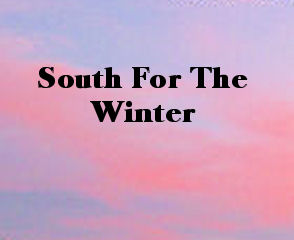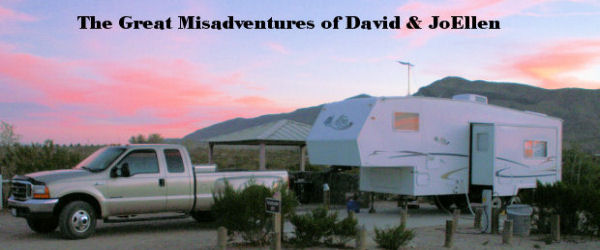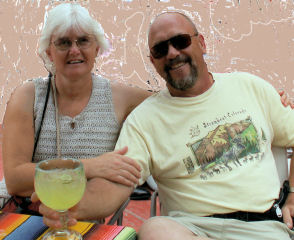
South for
the winter!
Once again we
have decided to return to the Arizona desert, choosing a drive that
takes us over the Sangre de Cristo Mountains into the San Luis valley
on our first visit to the
Great Sand Dunes National Park, Colorado
10/11/06
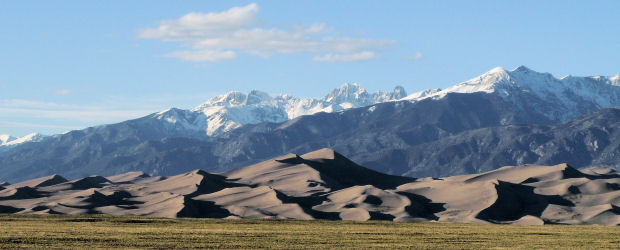
The huge
dunes, the tallest in North America, are only a small part of the 330
square miles of sand. This sand eroded from 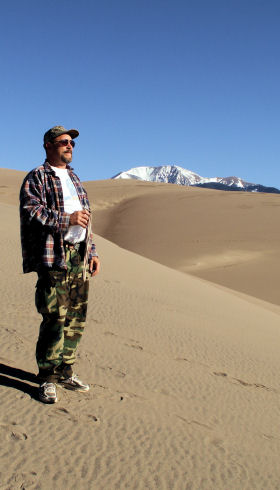 mountains,
was shattered by freezing and thawing, then tumbled and moved by
streams and the wind to be shaped into dunes. Mount Crestone
and Blanca Peak, both over 14,000 feet loom high overhead.
mountains,
was shattered by freezing and thawing, then tumbled and moved by
streams and the wind to be shaped into dunes. Mount Crestone
and Blanca Peak, both over 14,000 feet loom high overhead.
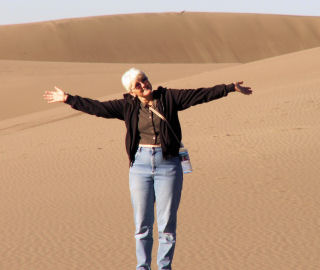
Medano and
Sand creeks flow seasonally around the dunefield. They carve
out and carry sand from the eastern, western, and northern edges of
the dunefield and redeposit it to the south, where the wind
eventually recycles it back into the dunefield. Spectacular is
the only word to describe this wonderful creation of God!
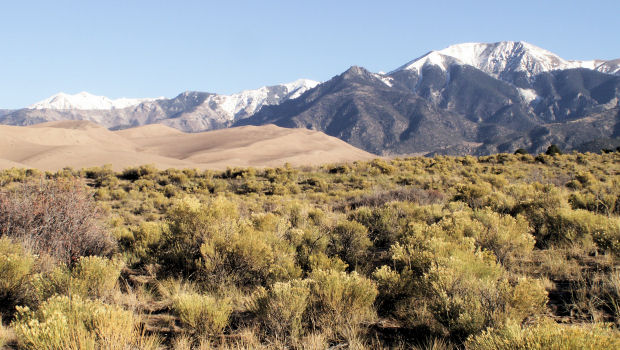
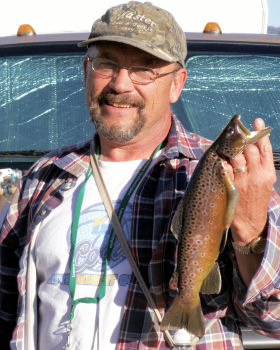
David got a
chance to catch dinner at our camp in Bayfield, Colorado, a very fat
16 inch Brown Trout.
Four Corners Monument
10/14/06
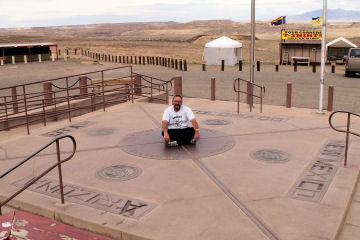
Four Corners
is the only site in the United States where the boundaries of 4
states meet. The SW corner of Colorado meets with Utah,
Arizona, and New Mexico here, a picture site and vender area for the
Native Americans living in the area. This monument is located
on the Navajo Nation Reservation and charges $3 a head to enter.
Mesa Verde National Park
10/15/06
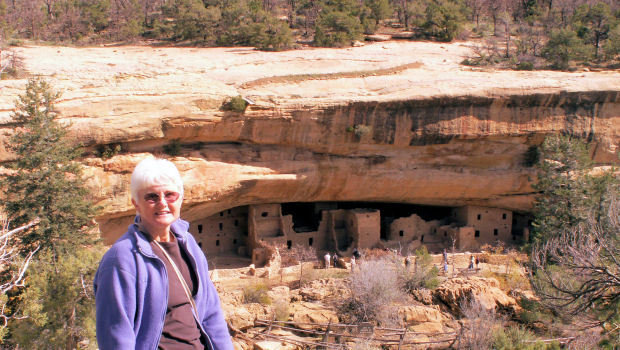
Mesa Verde
National Park is located 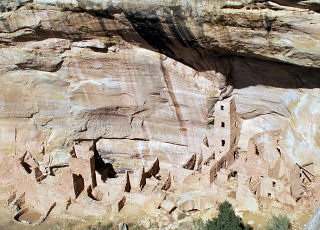 high
on a mesa top east of Cortez, Colorado. The park includes more
than 4,500 archeological sites, from pit houses on the mesa tops to
the 600 or so fantastic cliff dwellings of the Anasazi people.
We enjoyed the visit to Spruce Tree House, a cliff dwelling so named
because of a great Spruce, now gone, growing up from the village
enabling the rancher Wetherwill brothers to access the location from
the top of the mesa in the 1880's when it was discovered. This
is one of the largest villages in Mesa Verde (Spanish for "green
table") having 129 rooms and eight kivas (underground chambers).
high
on a mesa top east of Cortez, Colorado. The park includes more
than 4,500 archeological sites, from pit houses on the mesa tops to
the 600 or so fantastic cliff dwellings of the Anasazi people.
We enjoyed the visit to Spruce Tree House, a cliff dwelling so named
because of a great Spruce, now gone, growing up from the village
enabling the rancher Wetherwill brothers to access the location from
the top of the mesa in the 1880's when it was discovered. This
is one of the largest villages in Mesa Verde (Spanish for "green
table") having 129 rooms and eight kivas (underground chambers).
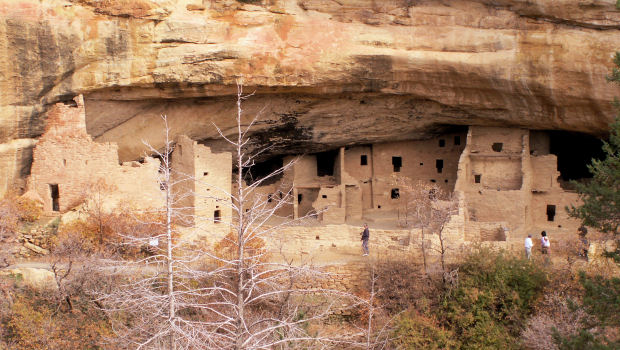
Kiva is a Hopi
word for ceremonial room that may be comparable to a church.
Based on modern Pueblo practice, these Ancestral Puebloans may have
used kivas for healing rites or to pray for rain, luck in hunting, or
a good crop.
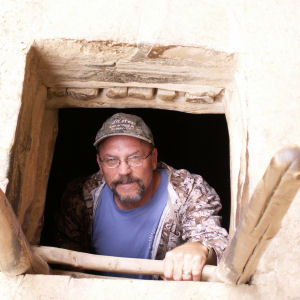
Entry was by a
ladder through a hole in the center of the roof. A symbolic
entrance to the underworld, called a sipapu, is a small hole is dug
into the floor of each kiva. The Anasazi lived in the cliff
dwellings for less than 100 years. By about 1300 Mesa Verde was
deserted, its residents traveling south into New Mexico and Arizona,
settling among their kin who were already there.
Stanton, Arizona
10/30 through 11/8/06
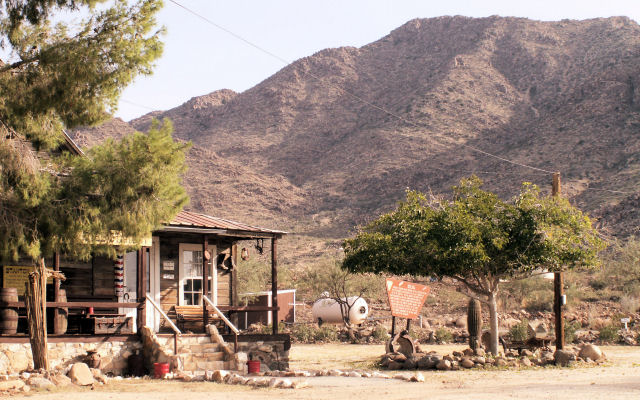
We come to
this part of the desert looking for gold. Rich Hill is the peak
in the background. 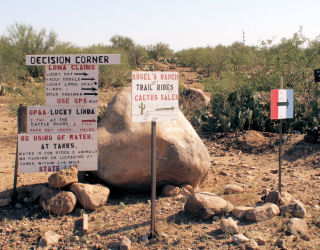
In the 1860's,
a Mexican in the company of Captain Pauline Weaver, while looking for
stray animals, discovered loose gold nuggets on top of Rich
Hill. Stanton is a ghost town now owned by the Lost Duchman's
Mining Association, and used by member prospectors as a camp in the
desert. We are camped just down the road, near 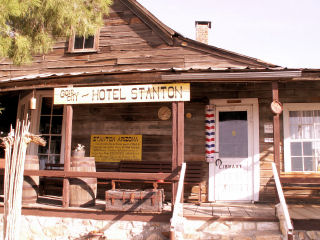 Decision
Corner. Lots of previous mining activity in the area, both
placer and hard rock mining was done extensively here.
Decision
Corner. Lots of previous mining activity in the area, both
placer and hard rock mining was done extensively here.
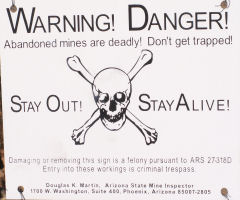
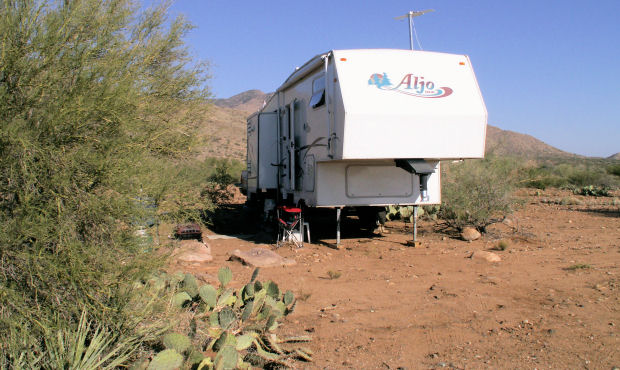
Our desert
camp at Stanton. The Octave Mine is in the background.
